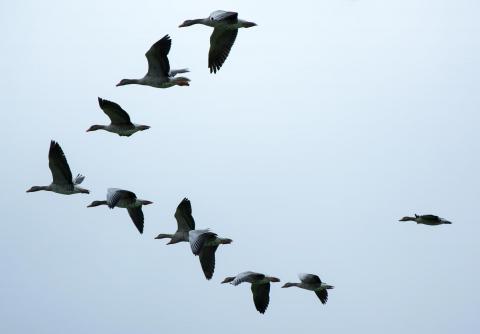SEO/BirdLife
If you are the contact person for this centre and you wish to make any changes, please contact us.
Ornithologist and technician at the Species and Spaces Unit of SEO/BirdLife
Member of the Society and Territory Unit and delegate of SEO/BirdLife in Asturias

Migratory birds are particularly affected by the climatic, ecological and urban changes resulting from the constantly changing world in which we live. Their survival is at risk, as are the ecosystems in which they live. We analyse the threats they face on a cyclical basis during their migratory routes and why it is important to protect them.

International research in which CREAF is participating estimates that more than 1,300 bird species will disappear over the next two centuries, which is more than double the number of extinctions recorded to date - 610 species have disappeared in the last 130,000 years. The study, published in the journal Science, shows that, for island endemics, the proportional losses have been and will be even greater. The authors warn that when a species becomes extinct, its role in the ecosystem may disappear with it.

A study led by the University of Montpellier (France) and with the participation of CREAF has analysed the causes of the decline in bird populations in Europe. To do so, they have compiled data on 170 bird species in 28 countries, including Spain, over 37 years. The overall decline is 25 %, and the decline in populations in agricultural areas is around 60 %. The main cause in both cases, according to the research, is intensive agriculture, although climate change is also an important factor. The results are published in the journal PNAS.

Species of birds common in the marshes of Doñana as the common tern, the brown pochard, the marbled teal, the marsh harrier or the black-bellied sandpiper have recorded a decline in their population for more than a decade, a trend that accelerated since 2019. This is one of the conclusions of the Report on the conservation status of waterfowl in Doñana, published today by SEO/BirdLife.

Climate change is causing a mass extinction of species, but for birds, this loss of biodiversity has wider implications. In research published in the journal Current Biology, researchers use statistical models to predict that this extinction will decrease morphological diversity among the remaining birds at a faster rate than species loss alone.